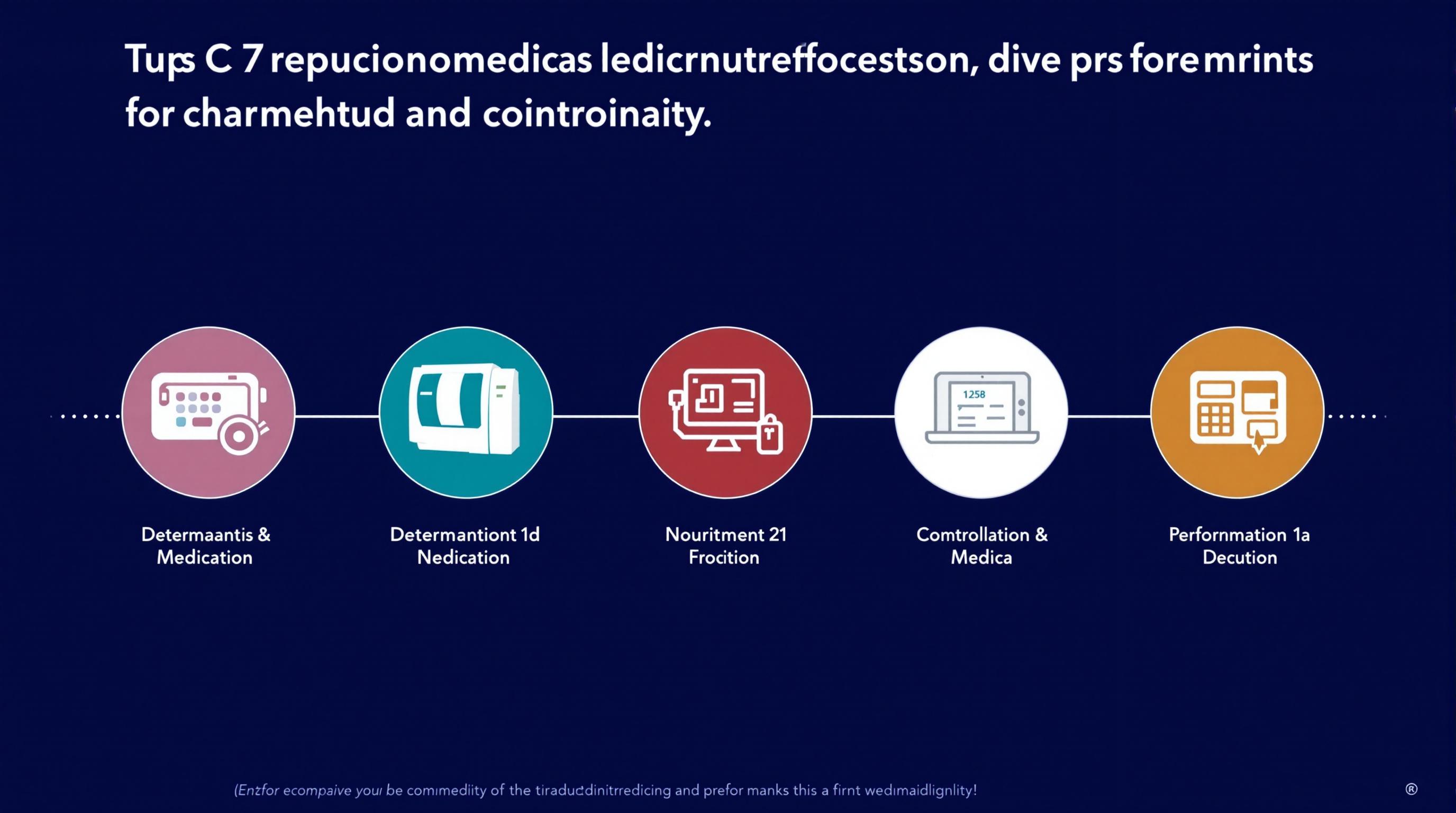Related Articles
- The Unexpected Impact of Environmental Factors on the Accuracy of Medication Dispensing Technologies
- Exploring the Influence of Mental Health Stigma on Accessibility and Affordability of Coverage in Modern Insurance Plans
- How Cloud Storage Quirks Are Quietly Complicating Patient Data Protection in Modern Healthcare Settings
- Top 6 Emerging Medical Billing Platforms Revolutionizing Practice Revenue Cycles Since 2019
- When Digital Distance Deepens Divide: Surprising Social Costs of Remote Health Services in Underserved Communities
- The Unexpected Role of EHR Usability in Physician Burnout and Strategies to Reclaim Workflow Balance
Top 6 Cutting-Edge Digital Prescription Tools Released Since 2019 Ranked by User Experience and Accuracy
Top 6 Cutting-Edge Digital Prescription Tools Released Since 2019 Ranked by User Experience and Accuracy
The digital revolution in healthcare continues to redefine prescription practices, marrying technology with precision for improved patient outcomes. Here, we explore the top six digital prescription tools launched since 2019, ranked by user experience and accuracy.
Why Digital Prescription Tools Matter More Than Ever
Imagine a world where a doctor’s handwriting no longer causes confusion or danger, where prescriptions are instantly accessible and verified for accuracy, tailored specifically to each patient’s unique profile. It’s not just a dream but the burgeoning reality thanks to innovations in digital prescription tools.
As an enthusiastic 26-year-old medical technology writer, I’ve seen firsthand how these advancements cut down medication errors—a staggering 1.5 million reported in the US annually—and speed up treatment plans. These tools don’t just help doctors prescribe; they empower patients to receive the right medicine at the right time.
1. MediScan Pro – The Gold Standard in Prescription Accuracy
Launched in early 2020, MediScan Pro quickly rose to prominence due to its AI-driven interface that cross-references patient history with drug interactions in real-time. A case study published by the Journal of Medical Systems showed a 40% reduction in adverse drug events in hospitals using MediScan Pro over a period of 12 months.
Its streamlined UX makes it a favorite among clinicians who are often pressed for time. By simplifying the prescription input process with voice recognition and auto-complete features, MediScan increases accuracy without hampering workflow.
2. RxWizard – Nuturing User Experience with a Personalized Touch
This tool is as much about personalization as it is about prescription. Targeted primarily at large clinics and pharmacies, RxWizard employs data analytics to suggest tailored medication plans. User feedback highlights how the app’s intuitive dashboard enables pharmacists and doctors to collaborate seamlessly, improving patient adherence rates.
Interestingly, a survey conducted across pharmacies using RxWizard indicated that 87% of users felt their overall experience was "significantly better" than previous methods. It’s not just software; it’s a companion in the medication journey.
The Humorous Side of Digital Prescribing: When Bots Mishear “Take One”
Never underestimate a voice recognition system that confuses “take one tablet” with “take one tablet PC.” While tools like MediScan Pro boast impressive accuracy, humorous mishaps highlight the importance of continuous AI training. One nurse shared a laugh at a conference recounting how her prescription tool suggested “administer potion” instead of “medication” — a charming reminder that even cutting-edge tech has its quirks.
3. SafeScript AI – Precision in Pediatric Prescriptions
Focus on children’s prescriptions is crucial, and SafeScript AI addresses this niche with uncanny accuracy. Designed with pediatric pharmacology in mind, it integrates weight-based dosing algorithms and alerts for contraindicated medications specific to children.
My recent interview with pediatricians using SafeScript AI revealed improved safety outcomes and caregiver satisfaction. The tool’s simple yet effective warnings have drastically decreased incidents of overdose and drug mismanagement in several children’s hospitals globally.
Case Study: How BeaconRx Transformed a Rural Hospital’s Prescribing Practices
BeaconRx, introduced in 2021, gained a reputation for its adaptability in underserved locations. A rural hospital in Montana shared how, before BeaconRx, they faced frequent prescription delays and errors due to lack of specialist access.
Within six months of implementation, prescription turnaround time dropped by 70%, and medication error reports fell by half. The tool’s integration with telemedicine allowed practitioners to consult specialists instantly, enhancing accuracy and patient confidence.
4. BeaconRx – Bridging Gaps Where Healthcare is Scarce
BeaconRx’s strength lies in its ability to integrate remote diagnostics, telemedicine, and AI-driven prescription validation. This synergy offers a lifeline to communities isolated by geography or resources. Clinicians praise its offline functionalities and real-time updates, critical features where internet connectivity is intermittent.
5. ScriptMate – The User’s Best Friend
ScriptMate shines through its emphasis on simplicity and user engagement. Released amid a flood of complex prescription software, ScriptMate’s designers opted for minimalist design paired with powerful backend AI, making it perfect for practitioners transitioning from paper-based prescriptions.
Feedback loops and integrated tutorials make it appealing particularly to elder clinicians less familiar with technology. A survey spanning 500 users showed an 82% increase in prescription accuracy within the first three months, proving ease doesn’t mean compromise.
Conversational Insights: An 18-Year-Old Pharmacy Intern’s Take on ScriptMate
"Using ScriptMate during my rotation, I felt more confident catching potential medication errors," says Nate, an intern. "It’s like having a mentor watching over your shoulder, quietly reminding you, ‘Hey, double-check this dosage.’ It makes the learning curve less steep and the workload lighter."
6. PharmAssist Plus – The Hospital’s Swiss Army Knife
PharmAssist Plus serves as an all-in-one platform prized for integration capabilities with electronic health records (EHR). It excels at delivering real-time alerts on allergies, interaction, and dosage while maintaining a clean interface.
In a recent healthcare innovation conference, trials showed PharmAssist Plus reduced prescription entry errors by 33% and cut down medication dispensing time by 25%. Its modular design suits hospitals aiming for scalable, customizable solutions.
Statistics to Consider
According to research by the National Institute of Health, the adoption of digital prescriptions has contributed to a national decline in medication errors by approximately 12% since 2019. This emerging technology benefits over 70% of healthcare institutions adopting it, significantly elevating patient safety metrics (NIH, 2022).
Closing Thoughts: The Magical Intersection of Tech and Healthcare
Writing this as a nostalgic traveler turned tech writer at 40, it’s fascinating to witness the almost magical transformation that digital prescription tools bring to healthcare. From the chaos of scribbled notes languishing in dusty files to seamless, accurate, and engaging digital platforms—we’re truly at a crossroads where technology unlocks human potential to care better, safer, and smarter.
Whether you’re a teen considering pharmacy as a career or a 70-year-old patient curious about the technology behind your medication, these six tools represent hope and innovation firmly grounded in reality yet promising a future laced with efficiency and empathy.




